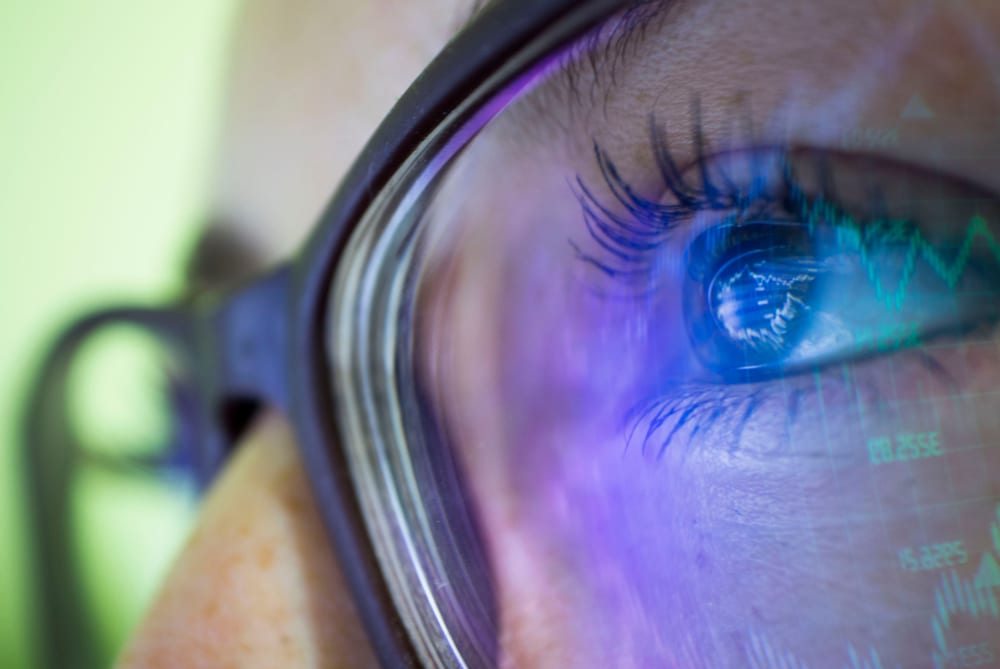
Computer Vision Syndrome is on the rise due to the long hours people spend in the office looking at digital screens, as well as the time spent using digital screens at home.
Let’s discuss what Computer Vision Syndrome is, what causes it, and how to treat and prevent it.
What is Computer Vision Syndrome?
Computer Vision Syndrome, otherwise referred to as digital eye strain, is the discomfort and vision problems that accompany viewing digital screens for extended periods.
It’s becoming increasingly common and can affect anyone who uses digital screens, regardless of age and gender.
Is Computer Vision Syndrome Permanent?
Computer Vision Syndrome is not permanent. The symptoms should typically ease when you take a break from looking at digital screens. If they don’t, it may be a sign of another underlying condition that should be checked out by a professional.
Causes of Computer Vision Syndrome
The main cause of Computer Vision Syndrome is simply viewing digital screens too often and for too long. However, there are other contributing factors, including:
- Poor lighting
- Glare on a digital screen
- Improper viewing distances
- Poor seating posture
- Uncorrected vision problems
Symptoms of Computer Vision Syndrome
Computer Vision Syndrome can present itself in a variety of ways. The severity of the symptoms is correlated directly with how long and often you’re looking at digital screens.
Look for these indications:
- Headaches
- Shoulder or neck pain
- Dry eyes
- Blurred vision
- Eyestrain
Treatment For Computer Vision Syndrome
There are a couple of ways to treat Computer Vision Syndrome, and many of these strategies are able to prevent it in the future, as well.
Bilberry Extract
Recent studies have found evidence that suggests natural supplements, like bilberry extract, can assist in treating Computer Vision Syndrome. This can help reduce strain on your eye muscles while you look at digital displays. Based on the responses of the participants, the study promotes that bilberry extract can improve eye fatigue.
Specialized Glasses
There are specialized glasses and contact lenses that can be prescribed to meet the demands of digital screens to maximize visual abilities and comfort. Even if you don’t wear prescription glasses, non-prescription glasses can have blue light coatings applied.

How to Prevent Digital Eye Strain
Treating digital eye strain and preventing it go hand in hand. Try these adjustments to your everyday life to not only alleviate the symptoms but also prevent them in the future.
Change Your Workstation
In your office, there are a variety of adjustments that you can make to ease your digital eye strain while working. These include:
- Adjusting your monitor to sit 4-5 inches below your eye level
- Setting your monitor up 20-28 inches away from your face
- Using a document holder for any reference materials
- Utilizing an anti-glare cover over your screen
- Checking to make sure that your screen isn’t brighter than the light in the room
- Sitting so your feet are flat on the floor
- Considering the use of blue-light-blocking glasses
The 20-20-20 Rule
The 20-20-20 rule can be applied while you’re working to alleviate and prevent further symptoms of eye strain.
The rule suggests that you should take a 20-second break and stare at something that’s 20 feet away about every 20 minutes. This gives your eyes a regular opportunity to take a break from the screens and rehydrate.
See the Experts at Clear Choice Laser
Your eye health is essential to your overall well-being. It’s important to have regular eye exams to ensure that your eyes are in peak condition to combat digital eye strain and that you follow the steps at your home and office to prevent Computer Vision Syndrome.
If you have underlying eye conditions that are exacerbating the effects of digital eye strain, don’t hesitate to set up an appointment with our knowledgeable team at Clear Choice Laser.
Our services include:
If you’d like to learn more or schedule an appointment, call us at 440-493-1539 or contact us on our website.
References
- American Optometric Association (AOA)
- Malaysian family physician : the official journal of the Academy of Family Physicians of Malaysia
- American Diabetes Association (ADA)













